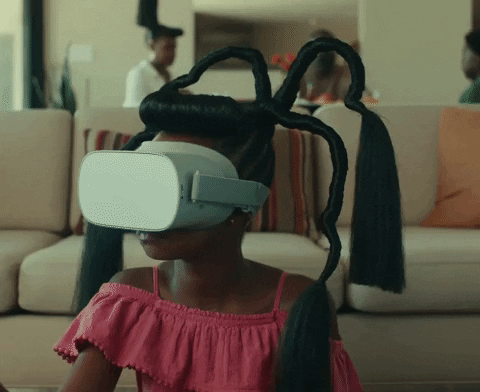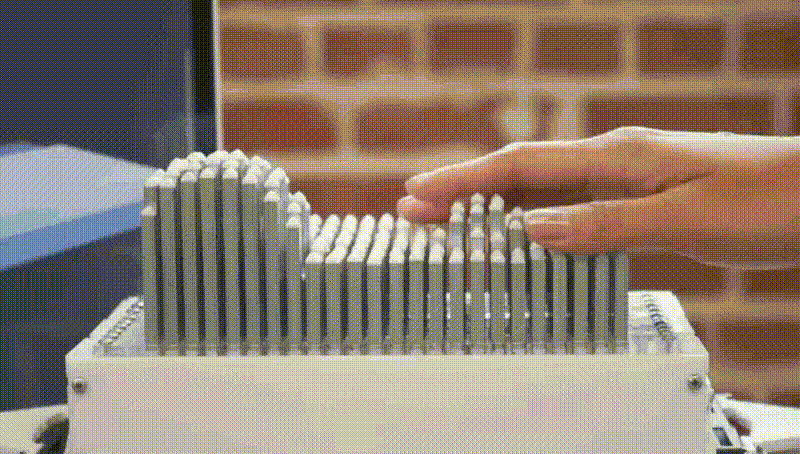In pursuit of enhancing the user experience, haptic technology adds a new dimension to the electronic devices users have been so attached to – like the mobile phones, game controllers, remote control devices, the modern wearable devices such as smartwatches or even in medical technology.
Haptic devices can incorporate tactile sensors that measure forces exerted by the user on the interface, and in a similar way provide haptic ‘feedback’ by exerting controlled vibrations felt by the user on the interface.
But how did it all come to pass, especially for mobile phones? Let’s check out this rumoured conversation between 3 inventors. This story begins in a lab, where some UI/UX experts were hoping to improve the user experience. The technology had succeeded in gaining the attention of users, but it did not have ‘the touch of a human’.
So Once upon a time sat 3 geeks in a lab:
Geek 1: This is the future you’re holding in your hands (Pointing to the smartphone), but it feels lifeless!
It can see and talk, it can sense and respond, it can even watch our back while we are sleeping.
Geek 2: But what else should we incorporate to make it more humane, right?
Annoyed Geek 3: (Smirks) It’s a phone. You want me to build arms and legs to it?
Geek 1: There is more to ‘humans’ than arms and legs.
Geek 2: What’s in its touch?
Geek 2: Well phones these days feel like deadwood phone bricks yeah!!
Geek 2: So all we need is a little handshake?
Geek 1: You mean vibrations?
Annoyed Geek3: Haptikos. It’s a greek word. Something about touches.
Geek 2: A phone that can vibrate just a a bit to interact with our palm/fingers adding just a little dimension to the experience.
Geek 1: It gotta be smooth, it got to be subtle. Just enough for the hand to sense it. The motors in the phone got to be perfectly controlled.
Annoyed Geek 3: Are we really doing this thing?
And they really did. Or maybe not, but probably that’s how they came about utilising the idea in smartphones..
Haptic Technology works on the principle of Touch. It has a language. It speaks and informs. In simple words, Haptic or Tactile feedback is one underrated feature that has truly contributed to the popularity of smartphones themselves.

The buzz of notification, the vibration of the keypad, the frequency of vibrations – all denote a different form of haptic feedback for smartphones; if the buzz is long, it denotes a call, whereas if it’s short, then perhaps it’s a message or a notification. That’s one way how bite-sized pieces of information can be used to convey information through haptic sensors, simulators and code in a phone.

User experience in Haptic communication is enhanced in the following ways:
- Tweaked user-satisfaction.
- Faster evocation of a response.
- Informing to the user through UI.
Incorporation of haptic technology for haptic feedback in UI/UX design does a lot more in different fields of work, an example would be, when it is coupled with VR or SpatialComputing, haptic technology intensifies the experience of immersion and immersive technology is known to increase user retention by 45%!

Another example would be in Automotives- haptic technology simplifies interaction with gesture control. Talking about automobiles, HaptX and Nissan have developed next-gen ‘haptic gloves’ that enables designers to experience steering wheel, navigation system, and the model design, virtually!

Even in digital marketing and advertising haptics technology and its composition with UX design helps in elevating engagement and brand awareness!

How Does Haptic Technology Work?
Just like the sensory nerves facilitating the sense of touch, haptic feedback in user interfaces works with a haptic sensor that generates a current which in turn creates a vibration. However, not all haptic technology is touch-based. The user sometimes just interacts with the space around a device, eliminating the requirement for direct contact through indirect contact or touchless haptics.

Another important part of haptics design for user experience, especially for haptic feedback in smartphones; is the placement of the motor. Motor placement in smartphone haptics is equally important because of its type and positioning in a smartphone. The motor must be strong, fast, and placed in the right place to help smoothen the strength i.e. the intensity of the vibration and the behavior or pattern of the vibration.
When we get to the core of Haptic Technology and haptic feedback in smartphones, two working principles function behind two haptic patterns on which feedback works. These are as follows:
- Transient events: These are brief and short experiences like one-tap coordination with a quick menu. Ex- sound recording widget.
- Continuous events: These are drawn-out and recurring vibrations. Ex- incoming call.
If you’re working with any of the two popular OSs you can then you can modulate your haptics experience in these ways-
- If you want to play with haptic on an iPhone, then you can segregate the ‘strength’ aspect of the haptic feedback into sharpness.
- If you wish to explore Android haptic feedback, then you can configure its ‘amplitude’ to manage the strength of the vibration.
How is Haptic Design Redefining Inclusivity and Accessibility?
Now that you know how it works… could haptic feedback in smartphones, or haptic technology in general help the differently-abled community? Will the advent of haptic technology in healthcare support our medical teams? How can science and technology benefit from the inclusion of haptic sense? Can haptic technology in web and mobile app development create inclusive and accessible spaces? let’s look at some of the thoughts through use-cases:
Where is Haptics Used?
Haptic technology in mobile and web app development has leveled up immensely. Beginning with Braille, the confluence of tech and human requirements have gone hand in hand, now with an awareness of socio-political terms like inclusivity and accessibility, Human-Computer Interaction is refining technology to incorporate tactile feedback, recreate bodily sensations, and talk directly to our brains, for greater Inclusivity!

Use of haptic technology is not limited to your smartphones, or video games! Its use-cases spread itself into a wide range of applications like telerobotic devices; flight and medical simulators; virtual reality depictions, and multifunctional touch screens within automobiles. Here are some interesting Haptics use cases:
1.Using Haptic Communication for Intuitive Surgery
According to this interesting study by Medgadget, Haptic Technology is helping even medical surgeons perform Intuitive surgery, an instance of which was the Telelap ALF-X Endoscopic Robotic Surgical System, which provides haptic feedback to a surgeon to indirectly feel the tissues of the patient through mechanized arms, through this technique they are able to perform operations from any location, with precision.

2. Haptic feedback for the visually disabled population
Haptic feedback in smartphones and the use of haptic technology in user interface- empowers visually impaired users, who are then enabled to utilize it more than most with its brainwave technology, by lowering frequencies of vibrations or turning them to jolts. NewHaptics, a tech company that focuses on streamlining experiences for visually impaired people, has developed a fluid Braille touchscreen with raised dots a.k.a ‘taxels‘ which is a merger of tactile+pixels. These raised dots help users in seamless navigation.

3. Haptic feedback for psychological comfort!
From physical to psychological; Haptic Technology in healthcare is helping people manage their mental health better with fluid patterns in haptic UI design. An amazing study conducted by Mindtrek, under the project Good Vibes (2016), showed that haptic feedback is helping people with stress and anxiety, deal with it in a better manner.

(Source:Giphy)
How does Haptics Modulate the Experience of Touch?
Why is it even necessary? Well because haptic technology is mostly based on tactile interaction; for instance, the use of haptic feedback in mobile app development like in smartphones, medical equipment, virtual reality immersions, etc. Haptic Technology aims at catering to the requirements of different communities in the following ways:
- By its Emotional Function: Haptic Technology functions psychologically by being part of a skeuomorphic design, it highlights touch as presence.
- By its Exploratory Function: The different types of haptic feedback in smartphones and in other equipments i.e. electro-tactile, vibrotactile, ultrasound, thermal and force feedback to help the user to explore the world.
- By its Sociological Function: With its active user experience in haptic communication function, through which users can actively participate and communicate with or recognize objects, haptic feedback through smartphone haptics in UI design or through different types of haptic technologies helps in taking action with ease and creates a sense of social interaction in SVEs or Shared Virtual Environments.
The Challenges and the Future Scope
There are some challenges still. While a haptic feedback system is indispensable, some manufacturers forgo the emphasis on its subtleties and users face any or all of these problems on their devices:
- The vibration is most often too strong.
- It drains the battery of most phones.
- The software may develop bugs!
Despite it all, Haptics is a breakthrough with its metamorphic creations for a myriad of spaces and requirements. Not only is haptic technology unveiling spaces of exploration with evolving tech, but also is spanning new dimensions for users on all levels of interaction. Now, this was how feedback through haptic technology supported communities in different areas, but will it evolve beyond its current form in smartphones as well? It has already been flagged for extreme implementations in the video gaming industry, wearable devices and robotics industry. It has come far since 1970s when it was first developed in an aircraft.
Interested in more such blogs? Tell us in the comments below!
Looking for a top Mobile App Development Company
? Search no further, and contact us to avoid the hassle.
This blog has been written with references and visual content from ResearchGate, Dell Technologies,Giphy, Tenor, Analytics Mag, BBC, TechCrunch, BBC, and Global Nissan Stories












